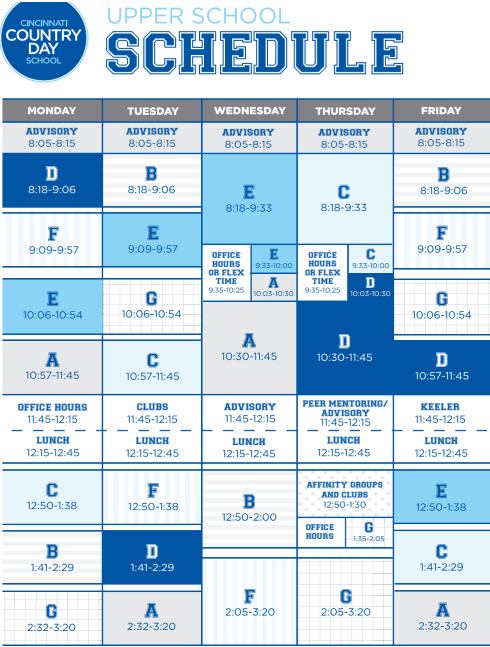By Holly Dayton, ’13, Contributor
Of the many kinds of learning at CCDS, learning through online, or electronic textbooks is a method unique to the middle school. Electronic textbooks are utilized for 8th grade history, math and science classes. Using this modern medium of learning can be helpful for some and difficult for others. After a sojourn into the Middle School to discover the students’ and the teachers’ opinion, the general consensus was that electronic textbooks are valuable for the students, alleviating weight in their backpacks, although sometimes putting strain on their eyes.
8th Grade History Teacher Mr. Park Gilmore uses an electronic textbook with his students, though he himself uses a hard copy. Mr. Gilmore’s class was the first to ever have an electronic textbook at CCDS, inspired by an idea by Mr. Richard Schwab, a longtime head of the Middle School. He noticed how the students were burdened down by heavy textbooks and wanted to relieve that strain. Mr. Gilmore considers the concept a relative success. However, he qualifies that “some students with learning differences succeed better with a hard copy, so they can highlight and bookmark.” These hard copies can be purchased through the CCDS Bookstore.
Head of the Middle School John Polasko enjoys having electronic textbooks when teaching math as well. He likes the features that a laptop provides, such as allowing students “to copy and paste into OneNote, where work is completed.” Aside from giving a technical advantage, Mr. Polasko also stressed the importance of the weightlessness of an electronic textbook. Mr. Polasko himself uses an electronic textbook, which he describes as “different from an online textbook. Online textbooks require the internet; a student can access an electronic textbook anywhere, as long as they have their laptop.” There is another aspect of electronic textbooks that is more minimal: the price. Electronic textbooks cost less than hard copies, and can be updated easily without buying a whole new book.
Yet, Mr. Polasko does concede that tactile learners can struggle with just a visual and no solidity.
When asked if the high school should adopt electronic copies of textbooks, Mr. Polasko replied that he “would love the high school to consider it, because of the advantages in weight and price, and the bonus that the students can’t lose it. Some absentminded students lose physical textbooks, but if it exists on the student’s laptop, they can’t misplace it.”
According to 8th Grade Science Teacher Nate Johnston, the online (and yes, his is online) textbook he uses for his class is appropriate as a supplement. Personally, Mr. Johnston “likes to read hard copies of books, but [he] consider[s] that an online textbook is just as helpful if it isn’t the only source of information.” Mr. Johnston’s opinion is common with that of the other electronic textbook teachers, thinking that electronic textbooks lessen the load, but have some faults.
Interviewing some students, a similar conclusion arose. Brooks Warner, ’14, and Jordan Ramey, ’14, prefer online textbooks so they don’t “have to go searching for a page” or “forget to bring it school,” respectively. A few other students like the idea, but have difficulty focusing on the screen. Emma Hoenemeyer, ’14, has found her “eyes hurt reading from a screen,” and Douglas Tallmadge has had difficulty reading from one as well.
On the whole, however, the 8th graders interviewed appreciate electronic textbooks and love the convenience they provide. Whether the small screen of a laptop can efficiently show a denser, more complex textbook is questionable, but the Middle School, and the 8th grade in particular has found great satisfaction in the use of electronic textbooks.
Photo courtesy of http://www.saycampuslife.com/images/textbooks.jpg



